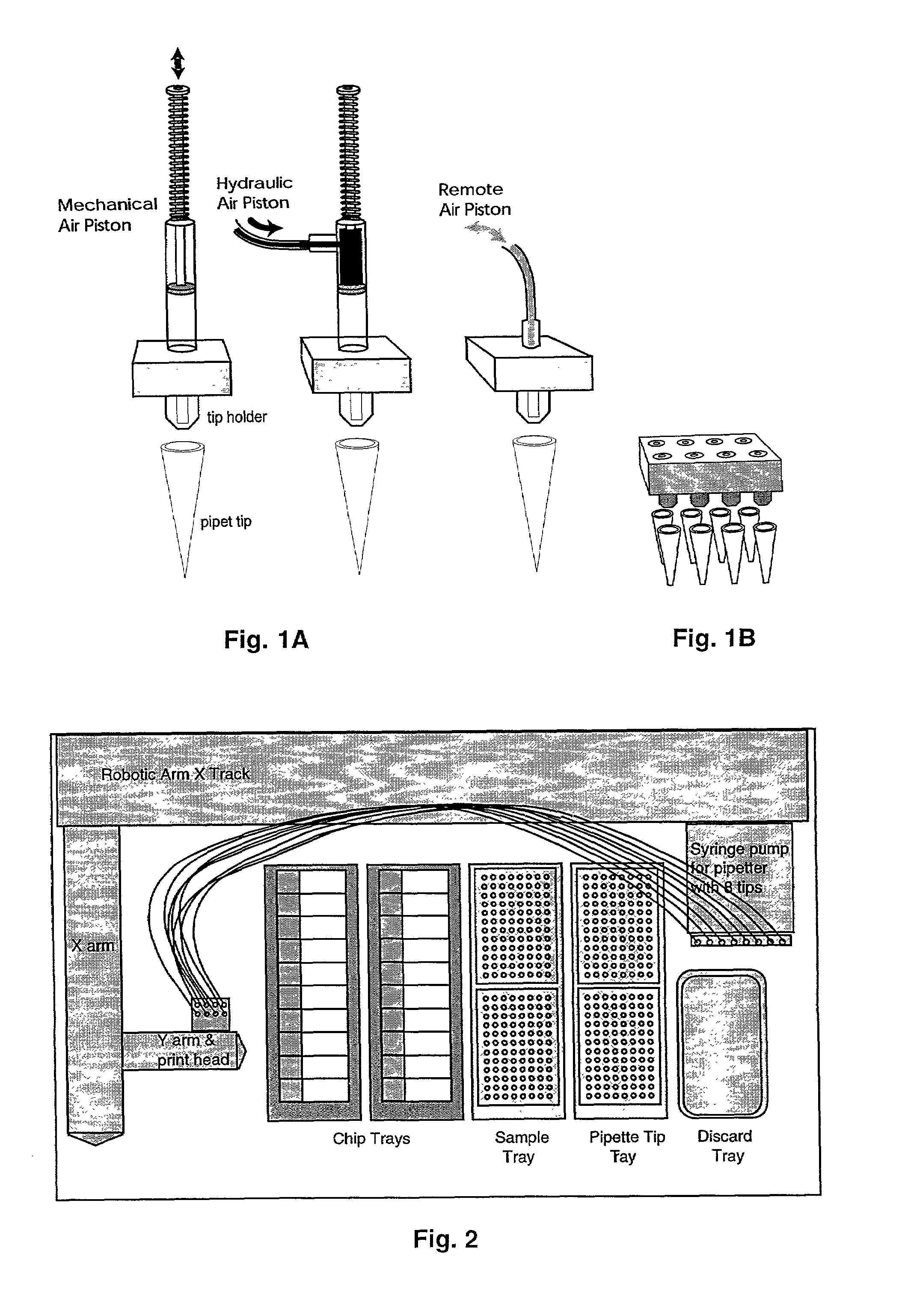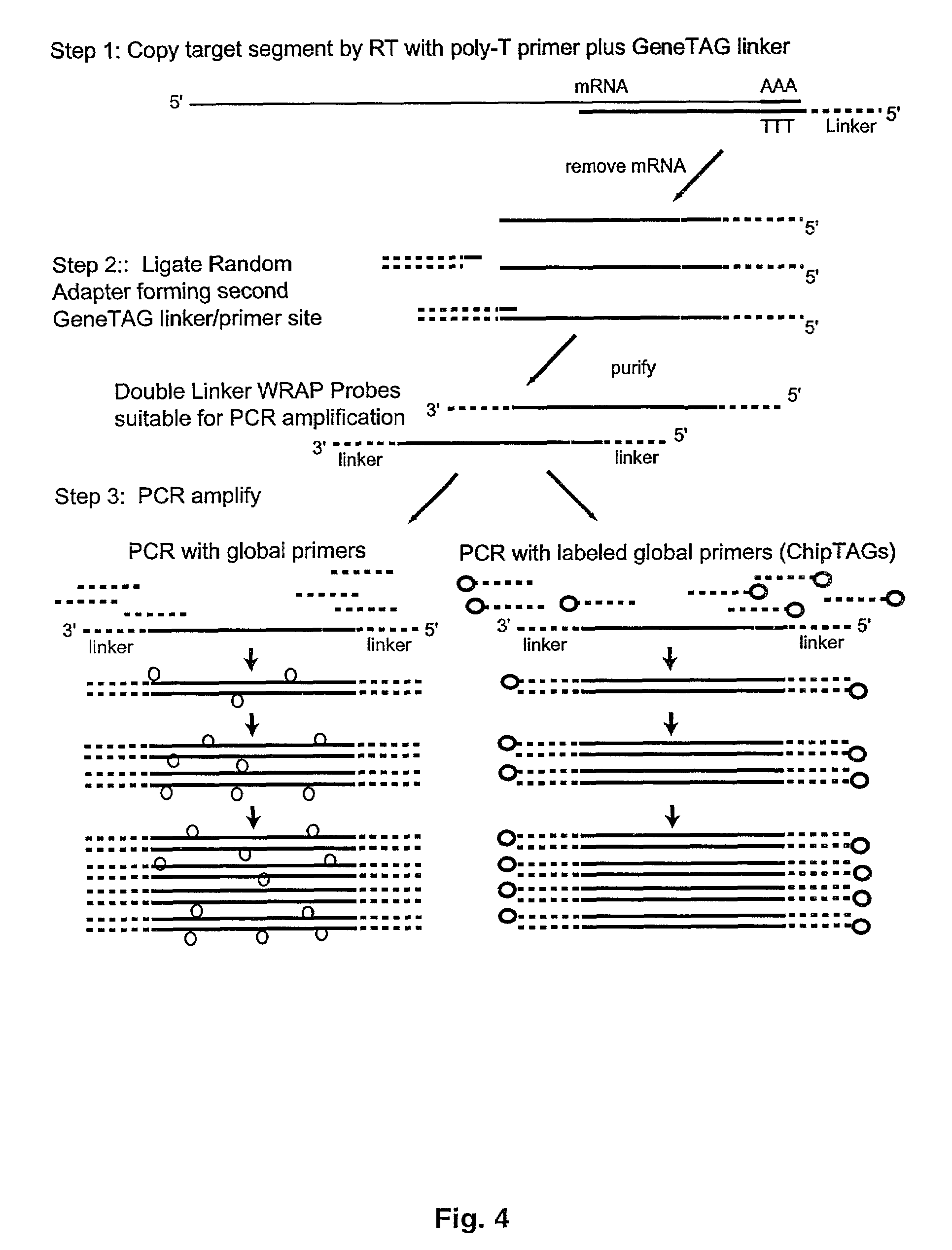Expression miniarrays and uses thereof
- Summary
- Abstract
- Description
- Claims
- Application Information
AI Technical Summary
Benefits of technology
Problems solved by technology
Method used
Image
Examples
example 1
Miniarray Fabrication
[0070]Typically, electronic or mechanical controls activate the operations of the print head and enable it to be moved laterally and vertically in relation to the functional regions of the working platform. The loading of each pipette tip is achieved by a mechanical pump or piston that aspirates the liquid sample by vacuum, typically drawing 2 to 20 microliters per pipetter. Dispensing is controlled by first applying minute pressure on the piston to form a droplet of reagent on the pipette tip and secondly by touching said droplet to the surface of the miniarray substrate. Alternatively, the piston may be plunged sufficiently to pressure a droplet from the pipette tip until the droplet releases by gravity (see FIGS. 1). While air-based micropipetters are not effective in aspirating solution quantities of less than half a microliter, hand-controlled pipetters can be demonstrated to load microliter quantities and to dispense nanoliter quantities in the range of 20...
example 2
Diagnostic Miniarrays
[0078]The present invention also relates to methods wherein the miniarrays are designed on the basis of disease-specific gene expression patterns that are predicted from clinical information or prior expression studies. Prior art has demonstrated that two tissues can be compared by competitive two-color probe binding to the same microarray, wherein expression changes in the subject sample will produce distinct color shifts in individual gene spot depending on whether the activity of that gene is increased or decreased.
[0079]Exploiting these induced signaling differences, the diagnostic miniarrays of the present invention are structured to form visual patterns in the miniarray based on clustering together groups of gene spots that are either upregulated, downregulated or unchanged in the disease state as compared to normal tissue of the same origin. One such embodiment is to arrange such miniarrays for a particular disease in a stoplight pattern wherein the upreg...
PUM
| Property | Measurement | Unit |
|---|---|---|
| Length | aaaaa | aaaaa |
| Length | aaaaa | aaaaa |
| Length | aaaaa | aaaaa |
Abstract
Description
Claims
Application Information
 Login to View More
Login to View More - R&D
- Intellectual Property
- Life Sciences
- Materials
- Tech Scout
- Unparalleled Data Quality
- Higher Quality Content
- 60% Fewer Hallucinations
Browse by: Latest US Patents, China's latest patents, Technical Efficacy Thesaurus, Application Domain, Technology Topic, Popular Technical Reports.
© 2025 PatSnap. All rights reserved.Legal|Privacy policy|Modern Slavery Act Transparency Statement|Sitemap|About US| Contact US: help@patsnap.com



